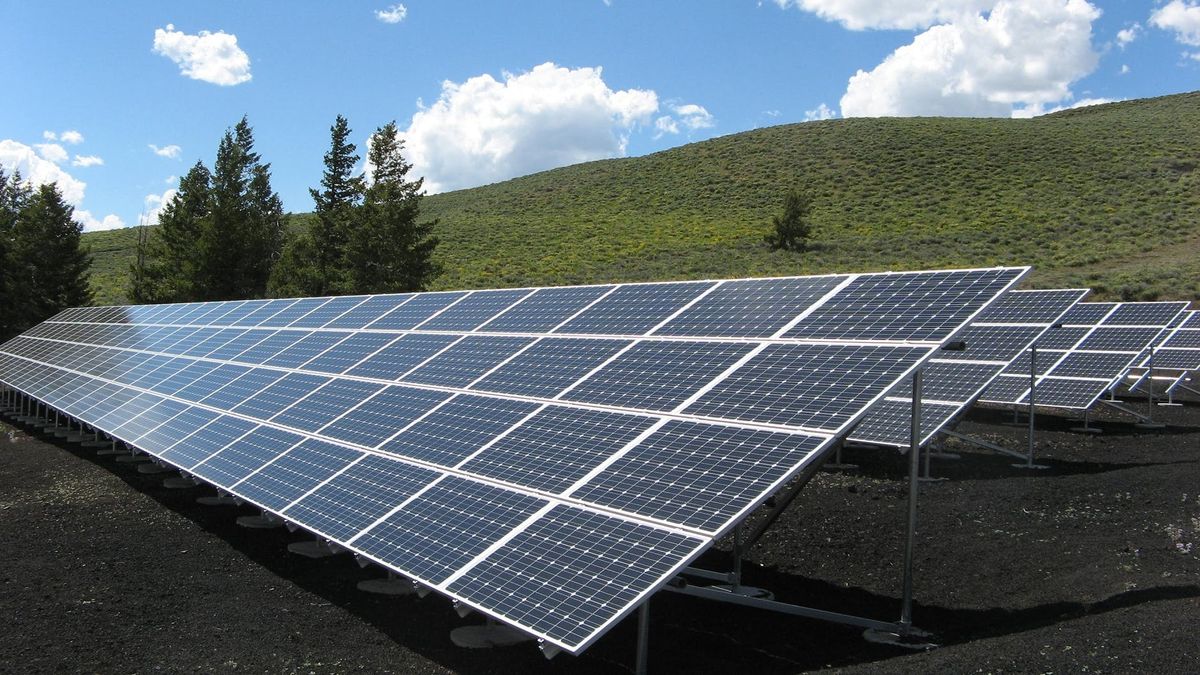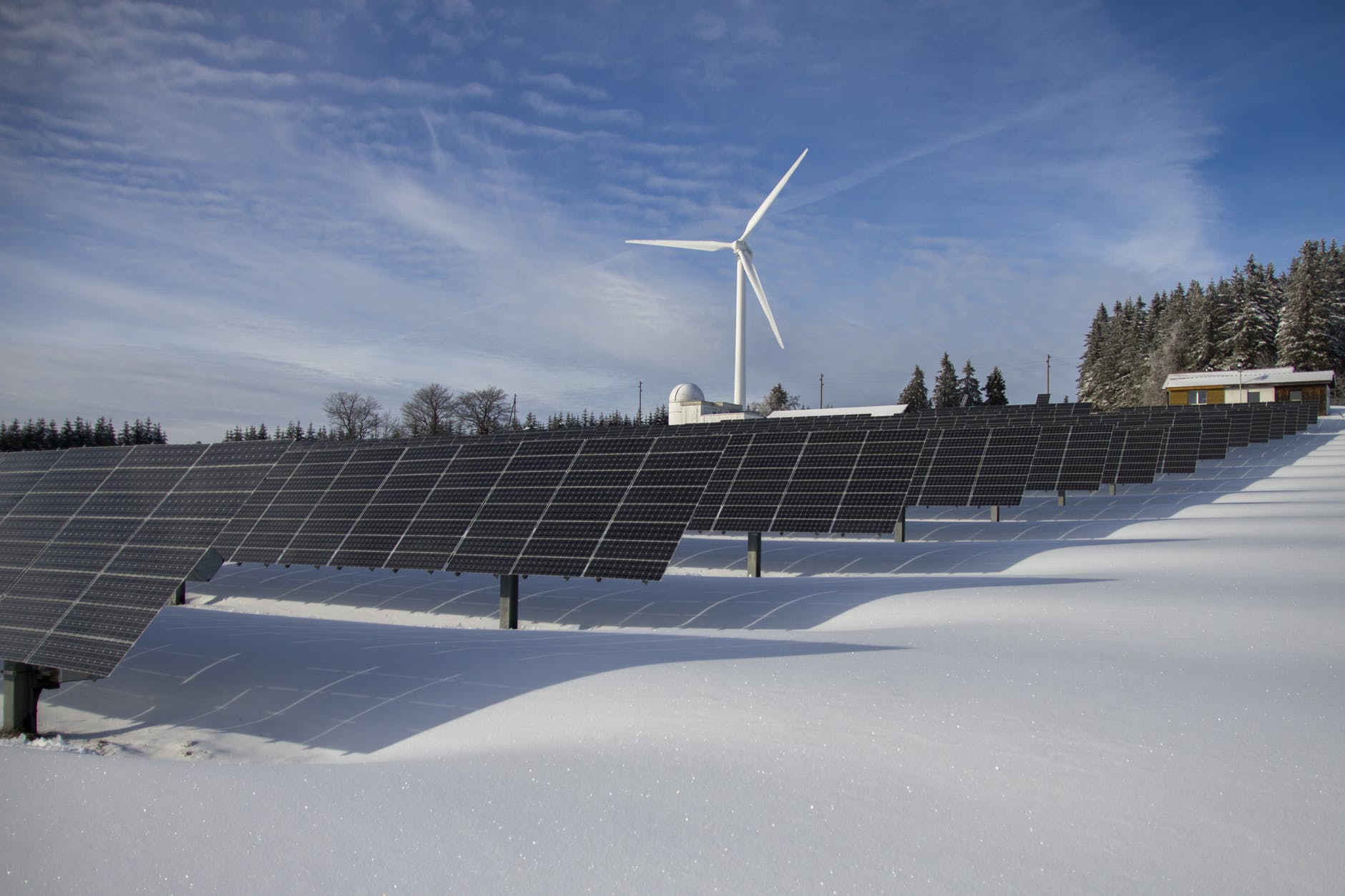How can renewable energy help the environment and climate change?

A few minutes every morning is all you need.
Stay up to date on the world's Headlines and Human Stories. It's fun, it's factual, it's fluff-free.
As defined by National Geographic, renewable energy is energy “generated from sources that naturally replenish themselves and never run out.” The most prominent renewable energy sources are wind, solar, hydropower, biomass and geothermal.
Renewable energy is worth more than its ability to address our energy needs. Renewable energy is also crucial to address our issues with climate change. To understand how renewable energy helps the environment, it’s important to discuss its benefits, financial benefits and the advantages of nonrenewable energy.
The benefits of renewable energy

No production of greenhouse gases
To help governments reduce their carbon footprint, the United States Environmental Protection Agency (EPA) recommends purchasing or directly generating electricity from clean, renewable sources. This is because renewable energy sources do not produce greenhouse gas emissions like nonrenewable energy sources. Unlike nonrenewable energy sources, renewable energy can answer energy needs without contributing to climate change.
Improves air and water quality
The Union of Concerned Scientists notes that nonrenewable energy sources are responsible for many pollutants entering the atmosphere, contributing to global warming and endangering public health.
People may be more familiar with smog and air pollution related to fossil fuel burning, but even water supplies are at risk. Mining and drilling for coal and natural gas also can pollute water sources. Meanwhile, thermal power plants consume water for cooling reasons.
Diversified energy supply
The EPA and the Union of Concerned Scientists also note the importance of diversifying energy supplies. Nonrenewable energy sources tend to exist in centralized systems. This means that if a failure occurs, it can affect the large region it serves.
Renewable energy sources are usually present in distributed systems. Therefore, the energy grid can be made more reliable by diversifying energy sources and distributing production.
Expanding access to energy
The International Renewable Energy Agency asserts that over 1 billion people lack access to electricity. Another billion then have an unreliable supply of energy. Whether due to the inability to afford the infrastructure for generating it or a lack of the natural resources to produce it, many areas can’t rely on nonrenewable energy sources.
Renewable energy infrastructure is much more flexible, and the natural resources involved (wind, solar, geothermal, biomass) are present everywhere in the world. So on top of helping to improve climate change, one of the most significant benefits of renewable energy is its accessibility for anyone, anywhere in the world.
The economic benefits of renewable energy

Stable prices
The World Resources Institute is a research organization that offers insight into the environment and economic development. For example, in their recent commentary on spiking energy prices, they note the potential of renewable energy to solve the issue.
Prices for nonrenewable energy sources can be prone to lots of fluctuation. Whether it is imported and has to contend with the whims of another nation, or whether infrastructure fails and production is held up, there are many different reasons for energy prices to fluctuate.
With the more localized distributed systems afforded by renewable energy, energy prices are better stabilized for users.
Inspires economic development and job growth
The Center for Resource Solutions further advocates for the economic benefits of renewable energy in addition to the improvements toward climate change. Increasing the production of renewable energy will require investment in new infrastructure. This will help promote jobs, education, and development in areas with a lack of opportunity before.
Advantages of nonrenewable energy

According to National Geographic, nonrenewable energy “comes from sources that will run out or will not be replenished in our lifetimes—or even in many, many lifetimes.” The most prominent example of nonrenewable energy comes from fossil fuels. Coal, petroleum (oil) and natural gas are examples of fossil fuels.
These nonrenewable energies are most commonly extracted from the earth. While nonrenewable energy has a negative impact on climate change, it does also have its advantages.
Affordability
Nonrenewable energy sources are relatively inexpensive to use, and there is less technology available to create renewable energy sources. Plus, there are already many mechanisms in place to easily extract and use nonrenewable energy sources, making them inexpensive.
Abundance
While nonrenewable energy sources will eventually run out and be difficult, if not impossible, to replenish, they are currently available in relative abundance. There are many reservoirs all over the world where oil can easily be pumped, and even sources like coal are present in large quantities.
Ultimately, the importance of the battle between renewable energy vs. nonrenewable energy comes down to their effects on climate change.
How can renewable energy help climate change?

Perhaps the most critical aspect of renewable energy is how it can help improve climate change. Climate change is mainly driven by greenhouse gas emissions produced in excess by human activities, especially the burning of fossil fuels.
The International Renewable Energy Agency offers a helpful guide on how renewable energy can help climate change. Reducing and even eventually eliminating the use of fossil fuels is crucial to reducing greenhouse gas emissions and resolving issues with climate change.
Renewable energy sources do not produce the emissions associated with nonrenewable sources. Therefore, by implementing more renewable energy into our infrastructure and investing more in the affordability and accessibility of the technology, we can maximize the environmental benefits of renewable energy.
Nonrenewable energy is currently the most affordable and abundant source of power on the planet. A lot of our current infrastructure is in place to accommodate these sources. While it has done a lot to advance society, its continued use puts the future of human life on Earth in danger. Renewable energy presents a way to address our energy needs and climate change issues.
Interestingly enough, the United States Energy Information Administration points out that renewable energy was the dominant form of energy production before fossil fuels took off. For example, biomass was burned for warmth and used for food. Water turbines and windmills were also popular sources of energy.
By investing in the advancement of technology today, we can improve our methods and the affordability of these technologies. Then, we can begin further to use the abundant renewable natural resources available to us.
Our ability to address the threat of climate change while still providing for the world’s needs is our most important consideration with energy production. The time to invest and promote renewable energy is now for the sake of our present and future.
Have a tip or story? Get in touch with our reporters at tips@themilsource.com




Comments ()